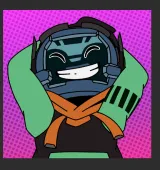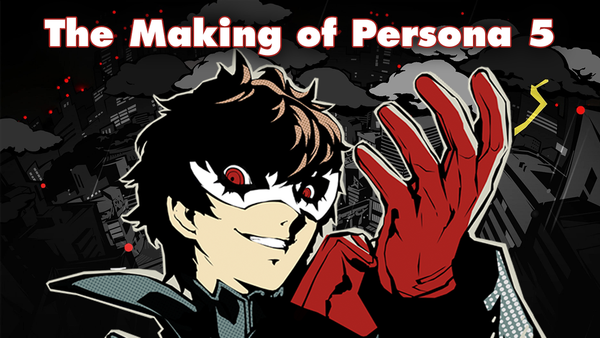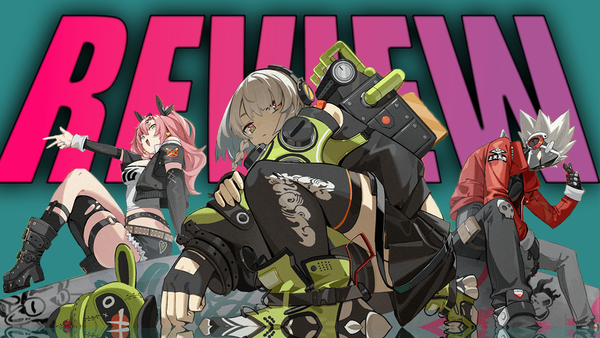Clair Obscur Expedition 33: The Ability to Let Go (Deep-Dive)

Overview
Expedition 33 is an exceptional video game—one that will undoubtedly be remembered for its innovative take on turn-based combat, an evocative soundtrack, a stellar cast of voice talent, and above all, a powerful, emotionally resonant story. This video will focus on unpacking that story—exploring the narrative depth, central themes, and emotional weight that define Clair Obscur: Expedition 33.
Be warned this is a full deep-dive into the game’s story, and as such, major spoilers lie ahead. If you're looking for a spoiler-free review, I’ve linked to that video below.
Now, with that said, Clair Obscur: Expedition 33 presents itself as a story about grief—how it consumes, shapes, and divides us. But if you look closer, you’ll find that at its core, it’s a story about something even more profound: the act of letting go. The struggle to move forward, even when the past refuses to release its grip.
There’s a line spoken early in the game by Lune to Gustave: “When one falls, we continue.” Another line, repeated by several characters, is “Tomorrow comes.” On the surface, these may seem like mantras of survival—a call to endure, a commitment to the mission. But beneath that, they speak to something deeper: the human need to find peace, to carry loss with us, and still choose to keep going.
The Struggle of the Cycle
The first theme worth exploring is how Expedition 33 examines memory, love, and loss—and how these elements reflect a broader struggle for perseverance. The world of Expedition 33 is defined by pain and hardship, yet beneath its surface lies a deeper, existential question: what does one do when faced with a finite amount of time? How does the knowledge of death shape the choices one makes?
In Lumière, you’ll encounter characters who respond to this reality in different ways. Some embrace life and seek meaning in the everyday, while others dedicate themselves to the cause—joining the Expedition in a fight that is both noble and harrowing.
Each Expeditioner carries the burden of memory. These memories—of lost loved ones and fractured pasts—fuel their resolve. Whether it’s Sciel mourning her husband, Lune recalling her parents, or Gustave carrying his bond with Maelle, their personal losses shape their identities. The ghosts of those they’ve lost become their guiding force, a quiet yet powerful motivation in a world that otherwise feels hopeless.
The unrelenting nature of this world is communicated not just through combat, but through environmental storytelling and scattered journal logs. These fragments paint vivid portraits of previous Expeditions—their intentions, their strategies, and ultimately, their downfalls. In reading them, one uncovers the fleeting humanity behind each mission: what drove these individuals forward and what truths they found in their final moments.
There’s something strikingly beautiful in the way Expedition 33 weaves artistic motifs into its worldbuilding and design. The Gesturals, with their puppet-like forms, evoke the look of wooden mannequins, while the Nevuron resemble fragile, glazed ceramics. These art-inspired elements are more than just aesthetic; they are embedded into the very fabric of the game's atmosphere and themes.
Where Expedition 33 most profoundly draws on artistic reference points, however, is in its environments. The game contrasts brightly lit spaces like Lumière—radiating warmth, hope, and optimism—with the dark, war-torn battlefields, where light struggles to pierce through the gloom. These environmental contrasts serve a symbolic purpose. The light, however faint, represents resilience—a reminder that even in desolation, the impulse to continue remains. No matter how dim the world becomes, we continue.
Altogether, Expedition 33 builds a world where the odds are not just high—they’re rigged against you. And yet, the game offers something deeply human: the will to persist in the face of certainty. It’s in that resistance, against all logic and all fate, that its most profound theme emerges.
(show grief titlecard - have that flick sound)
The Weight of Grief
The next major theme—often perceived as the emotional core of Expedition 33—is grief. While some may see it as just one facet of the narrative, it is in fact the throughline that ties together the game's many stories, themes, and character arcs. It walks in lockstep with the game’s deeper meditations on memory, time, and loss.
Grief is introduced early in Act 1, where it manifests in the quiet despair of the Expeditioners. They move forward burdened by the memory of lost loved ones, the futility of their mission, and the overwhelming sense that they are living on borrowed time. The world they inhabit is unforgiving, and each step of their journey is shadowed by a grim and uncertain future.
Yet grief doesn't fully take shape until Act 2, with the sudden and irreversible loss of Gustave—the character who had been framed as the main protagonist throughout the game’s marketing. This narrative pivot isn’t just shocking—it’s personal. For the first time, the player feels the same loss the characters feel. It’s a shared grief, and it reshapes the emotional stakes moving forward.
By Act 3, the true scope of grief comes into focus. We learn that Lumière and the surrounding Continent are the result of a supernatural act: a painted world brought into existence by Renoir and Aline’s deceased son, Verso. The Dessendre family possesses a unique ability—the power to paint reality into being—effectively turning raw emotion into living memory. And at the heart of this is Aline.
Aline embodies the depths of unresolved grief. From the game’s cover art to the distant, towering monolith seen throughout the early acts, her presence is inescapable. She resides in the world her son created—a world frozen in time—clinging to the final traces of a lost child. Her sorrow has led her to preserve this painted reality, resisting the natural order of life and death.
This act of preservation sets off a chain reaction. Renoir, her husband, enters the canvas as well, leading to a metaphysical battle between the desire to let go and the desperation to hold on. It is this emotional conflict—between two grieving parents—that drives the overarching story of Expedition 33. The struggle between Aline and Renoir is not just a war of ideals; it’s a manifestation of grief itself. And what the player initially perceived as a mission to stop the Paintress reveals itself to be something much deeper: a confrontation with sorrow, denial, and the cost of memory.
Aline’s painted world is not just a sanctuary—it is a prison built from grief. Through it, she tries to protect not only the memory of her son but also the fragments of her fractured family. Expedition 33 uses this supernatural framing to explore very real emotional truths, making grief not just a theme, but the emotional engine that powers the entire experience.
(the burden of time - click sound)
The Burden of Time
Another significant theme explored throughout Expedition 33 is the burden of time—its oppressive weight, its unrelenting passage, and the torturous stasis it imposes on the world and its characters. This theme is reflected in both the structure of the narrative and the haunting world design.
At a broader level, the cyclical nature of the gommage ritual and the recurring Expeditions underscores the grim repetition that defines life in Lumière. Scattered across the landscape are the stone-carved corpses of past Expeditioners—silent remnants of failed missions. Their journeys, discoveries, and final thoughts are left behind in fading journal logs, forever trapped in time. These remnants give the world a melancholic tone: one where survival is reduced to a slow crawl forward, clinging to memories and meaning.
This overarching motif of time is embodied most powerfully in Verso, a character suspended between existence and memory. Verso continues to live—not by choice, but as a mechanism. His presence maintains the illusion of life in the painted world, fueling the grief of his mother, Aline—the Paintress—who clings to his memory so fiercely that she traps him and the entire Continent within a static, painted stasis.
Verso is more than just a character—he is a metaphor for legacy itself. The world of Expedition 33 exists inside one of the childhood paintings Verso created, making the canvas both a literal world and a prison of sentimentality. The version of Verso we meet is a painted recreation, an echo of a child long gone. Yet within the painted realm, he remains conscious—aware of the futility of the Expeditioners’ efforts and his own role in maintaining a fantasy that has long outlived its purpose.
This reaches its emotional apex in the game’s finale, when the player is presented with a critical choice: preserve the world with Maelle, or allow it to fade with Verso.
Choosing Maelle means sustaining the illusion. She wants to remain in the canvas, avoiding the pain of loss by embracing a fantasy where everyone gets a happy ending. But in doing so, she denies herself closure, and prevents the world from progressing. It’s a beautiful dream—but one rooted in avoidance.
Verso’s path, on the other hand, is the harder truth. Choosing him results in the dissolution of the canvas, and with it, the end of the world as it exists. His decision is driven by a desire to end the cycle of grief that his family has endured, and by a personal plea: to finally be allowed to rest. The final moment of his route is poignant—Verso walks away with the silhouette of his younger self, the child who has quietly been painting throughout the game. The child tells him, “You do not need to paint anymore.” In that moment, both the legacy and the memory of Verso are laid to rest.
This ending speaks to Expedition 33's ultimate meditation: that moving on is not about forgetting, but about finding peace with what has been lost. Letting go becomes an act of love—and in doing so, the world and the people within it are finally free from time’s cruel stasis, and in turn offers The Dessendre family the ability to let go.
(titlecard - the ability to let go - click sound)
The Ability to Let Go
As previously touched on, grief is a powerful thread woven throughout Expedition 33—but it is not the game’s central theme. Rather, grief serves as the emotional conduit to something deeper: the ability to let go.
This theme comes into full clarity during the final act of the game, where Expedition 33 offers the player a choice that defines not just the ending, but the meaning behind the entire journey. The choice is deceptively simple—do you side with Maelle or with Verso—but the implications are profound.
Choosing Maelle means preserving the painted world. In doing so, you knowingly fall deeper into a fabricated reality, clinging to an illusion that cannot last. This choice, though understandable, denies Verso the peace he so desperately seeks. It is a decision rooted in emotional self-preservation—a refusal to face the pain of loss, even at the cost of prolonging someone else’s suffering.
Choosing Verso, on the other hand, means embracing the difficult truth: that this world must end, that Verso must be allowed to rest, and that his family must finally release their grief. His route isn't about erasure—it’s about resolution. It is about acknowledging that the past, no matter how cherished, cannot be preserved forever. That sometimes, love means letting go.
This theme reverberates across the entire narrative. From the mantras recited by the Expeditioners to the stories of the loved ones they carry with them, the idea of moving forward is ever-present. Every party member is motivated by loss—each one holding onto a memory that defines them. But the arc of their development—and yours as a player—isn’t about holding tighter. It’s about learning when and how to let go.
Verso’s ending encapsulates this perfectly. It allows him peace, and more importantly, gives his family a path forward. In the final scene, Alicia—Maelle’s real-world counterpart—watches as the characters of the painted world bid her farewell. They scatter like ashes on the wind, in what may be one last gommage. It’s a beautifully understated moment of closure—one that acknowledges the weight of the journey, while signaling a willingness to move on. She accepts reality, but she doesn't forget the experience. And neither will you.
Which brings us to the most intimate layer of Expedition 33—you, the player.
So much of what Maelle experiences mirrors what you feel. She is bright-eyed, full of purpose, and learns the truths of this world at the same pace as you. Her motivations, fears, and doubts become your own. By the end, your bond with her is so strong that the decision feels almost personal. You want to give her a happy ending. You want to believe the painted world can be saved. But deep down, you understand what must be done.
That’s what makes choosing Verso so difficult—and so meaningful. The game doesn’t just ask Maelle to let go. It asks you to do the same. Let go of this world. Let go of the friendships, the stories, the campfires, the mysteries. Let go of a fantasy that you, like Aline and Maelle, have become attached to.
But in doing so, Expedition 33 offers one final truth: letting go isn’t the end. It’s the beginning of something new. The memories remain, the impact endures—but the journey, as all must, comes to a close.
It’s time to let go.
Conclusion
In conclusion, Expedition 33 delivers a masterfully crafted narrative—one that grips you from the very first moment you press “New Game” all the way through to the final credits. While it rarely leans on branching choices or overt consequences, the moments when it does invite player agency are profoundly impactful. These decisions carry real emotional weight, echoing through the world and narrative in ways that evoke the resonance of NieR: Automata’s unforgettable finale.
Mechanically, Expedition 33 reinforces its bleak and unforgiving world through intense, punishing combat—an experience that feels finely tuned and evocative of a soulslike, where every encounter is hard-earned and deliberate. But at its core, Expedition 33 is not just a game about challenge or survival—it is a poignant exploration of grief, and the quiet, painful ways we attempt to reclaim meaning from loss.
It is a story about the things we hold onto—memories, fantasies, people—often as a means to find balance in chaos or to maintain a sense of control. But ultimately, Expedition 33 is about the courage to release those things. It is about accepting pain, honoring what was, and finding the strength to move forward.
It is, in the truest sense, a story about letting go.




